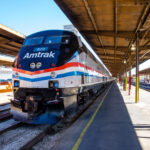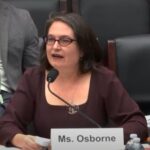Los Angeles residents lose over 100 hours each year due to traffic congestion. For decades, freeways and single-family neighborhoods spread outward and parking consumed more land. It’s difficult to get around Los Angeles without a car–yet it’s difficult to get around with a car due to frequent traffic. The metropolitan area also has the worst air pollution in the US and communities of color are exposed to major air pollutants from vehicles at disproportionately higher rates.
Yet despite its reputation, not everyone drives in Los Angeles. Almost a million people took public transit in the county on a weekly basis–over 850,000 of whom were bus riders–before the COVID-19 pandemic starting in 2020. Bus riders in Los Angeles reflect the region’s diversity, yet a majority are people of color and from low-income households, and increasingly women, who often take shorter and more frequent trips.
ITDP has been working with the Mayor’s Office since 2019 to support their efforts in creating a zero-emission area within the city limits of Los Angeles, the largest city in the county. In 2017 Mayor Eric Garcetti signed C40’s Green and Healthy Streets Declaration, which includes a commitment to establish a major area of the city as zero-emission by 2030. ITDP has worked alongside the Mayor’s Office to embed an equitable approach to planning a zero emission area that shifts people out of fossil-fuel based cars and encourages walking, cycling, and bus ridership. As these efforts move forward, it’s critical that City of Los Angeles agencies work together in collaboration with the community to develop zero-emission mobility solutions.
Better bus service and BRT can be a key solution for a zero emission area and traffic congestion for Los Angeles. When planned to high standards, BRT can move people quickly and easily in similar ways to light and heavy rail. While bus ridership in Los Angeles dropped during the pandemic in 2020 (although at less drastic levels than other cities around the US), rates had already been decreasing over the past decade, by some estimates up to 25%. Riders have complained of long waits, delays, hot and uncovered bus stops, multiple transfers, along with safety and sanitation concerns. Many of these same bus riders also walk and face dangerous conditions as pedestrians as well. There is a significant need for improvement.
In coalition with local partners, ITDP is also ensuring that BRT corridors in Los Angeles are built and developed to the high standards that Angelenos deserve. In one example, ITDP is supporting a community BRT proposal that includes dedicated lanes, center-running stations, and protected bike lanes. Thankfully, it was recently decided to run the BRT within the neighborhood, instead of bypassing on the highway, yet there is still more to do to ensure a high-quality corridor like the LA Metro G (formerly Orange) line. ITDP is also leading efforts to advocate for dual side doors on buses, which will improve bus service by alleviating conflicts at the curbside for bike use, micro mobility and outdoor parklet dining.
Many other efforts are moving forward across the region to support better bus service and high-quality BRT including bus-only lanes, a significant overhaul of the bus network through the NextGen Bus Plan, and a pending state bill that will allow for camera enforcement of bus-only lanes. This momentum is shifting investment into high-quality bus transit and will hopefully lead to an integrated BRT network for new upcoming lines in the county, specifically in the North San Fernando Valley and along Vermont Ave in the City of Los Angeles.
Fortunately, climate change and traffic congestion are major political issues in Los Angeles and residents understand that things must change. Several years ago, voters in the county agreed to a sales tax that will bring billions of dollars for public transit projects and service over the decades and includes funding for up to four BRT lines by the 2028 Los Angeles Olympics. With renewed focus on sustainable mobility and strong vision for buses as a backbone, Los Angeles can foster a new era of investing in zero-emission mobility through the bus.
The post Buses are Critical to Zero-Emission Mobility in Los Angeles appeared first on Institute for Transportation and Development Policy.







